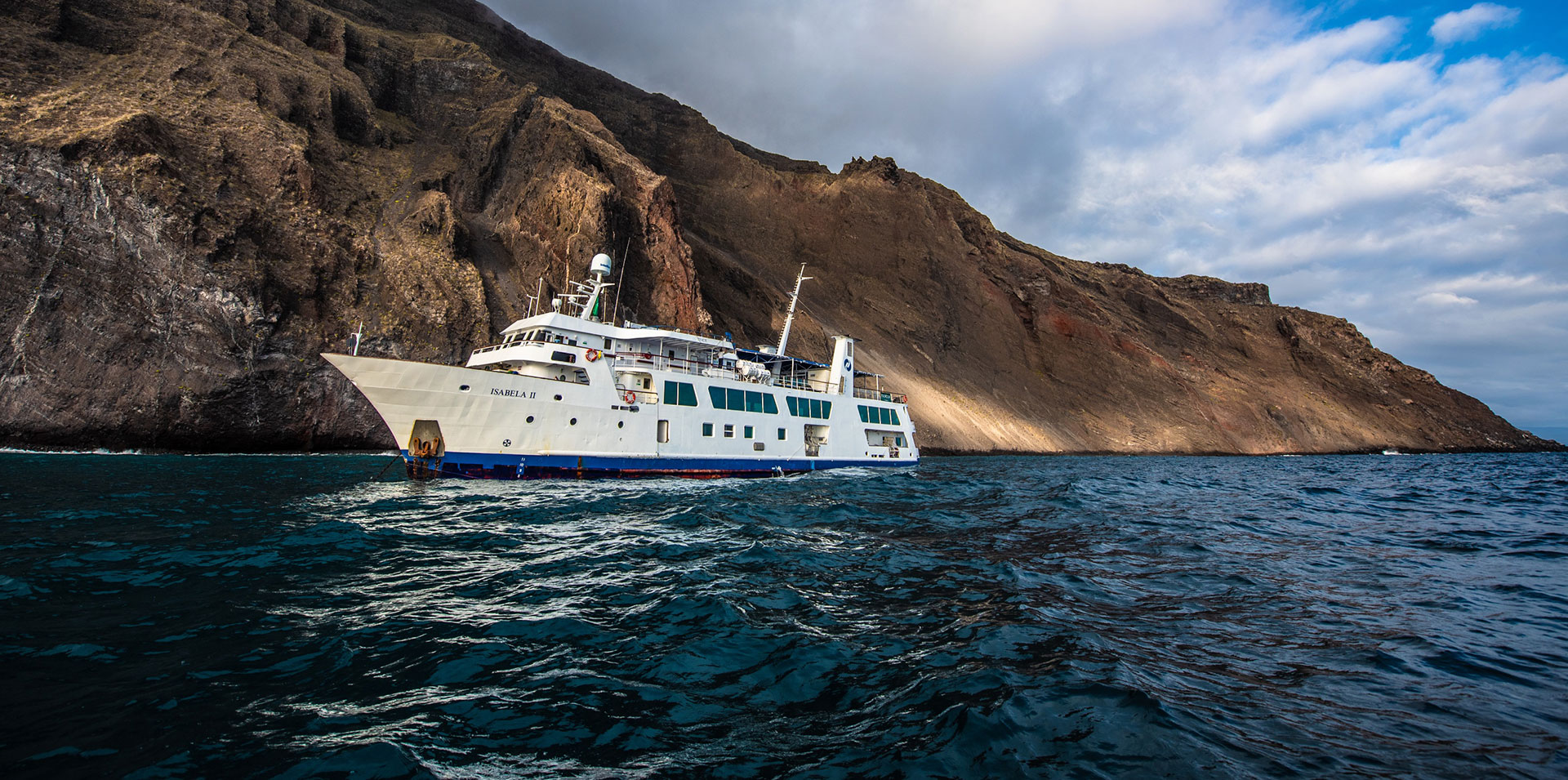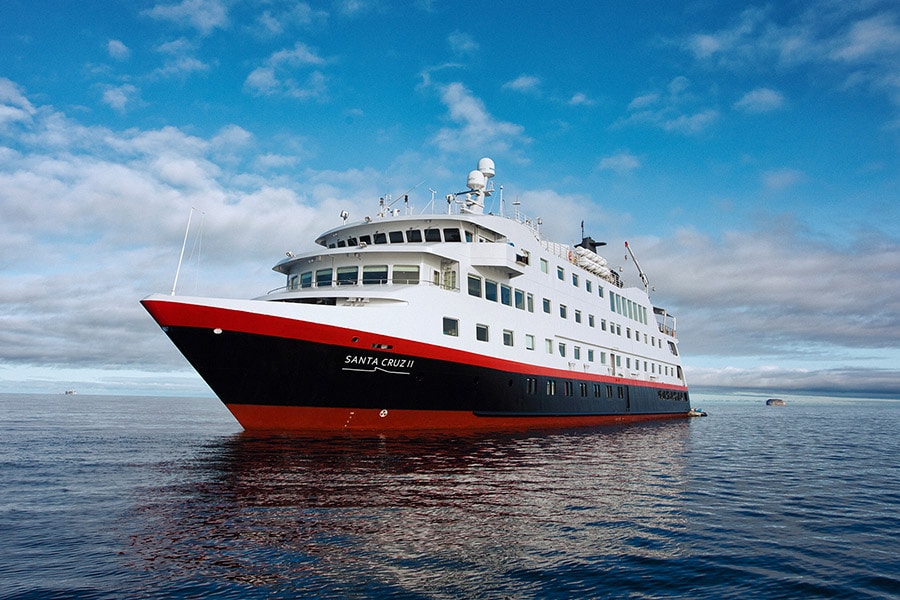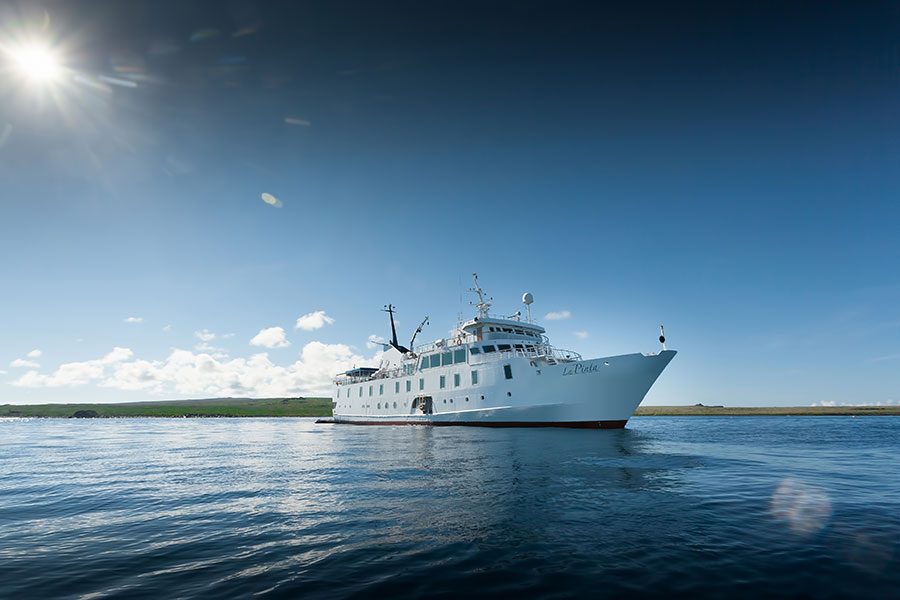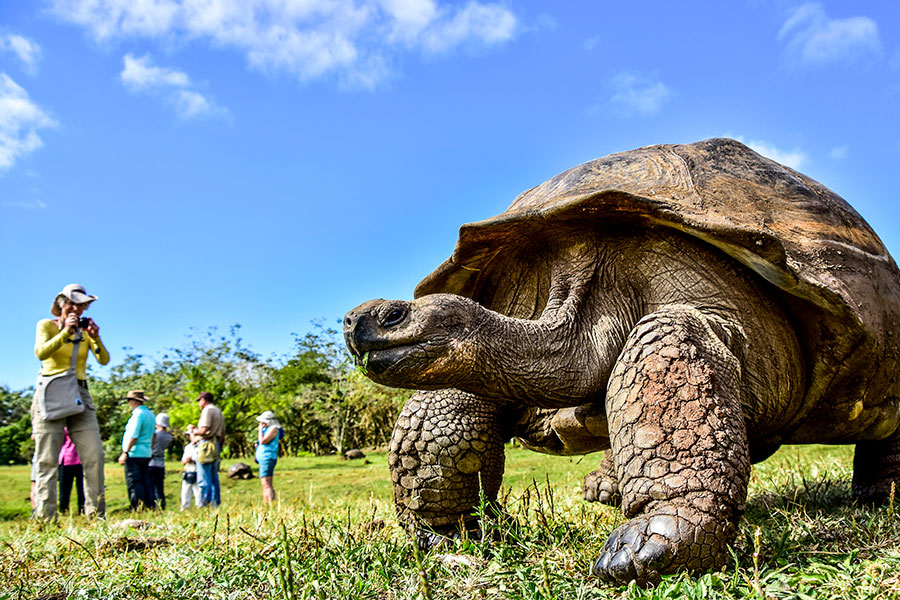MENUMENU

Reading time: 7 mins
Galapagos expedition vessels are the only ones permitted to cruise through the Galapagos Islands. Though they are occasionally called “cruise ships,” this is a bit misleading. This section discusses what distinguishes expedition vessels from considerably bigger ships, typically considered “cruises.”
There are eight categories of ships that correspond to various size measurements. These go as follows:
Organizations like Cruise Lines International Association (CLIA), the Center for Disease Control (CDC), and Cruise Critic have adopted these categories, which are determined by a concept of measurement called gross registered tonnage (GRT). This is the total volume within a marine transport vessel. Each registered ton is equal to 100 ft3 (2.83 m3).
People who reside in the Galapagos, as well as those who visit, typically go by ship. These ships exist in various sizes, but none are as large as we often envision when we hear “cruise ship.” They are restricted in size and strictly monitored to maintain the region’s highly vulnerable ecosystems.
The Galapagos Islands are an incredible site comprising various islands, islets, and rocks with a total land area of 3,040 mi2 (7,880 km2). They are located near the equator, around 670 miles (1,000 kilometers) off the coast of Ecuador. The Galapagos National Park and Marine Reserve encompasses 97% of the archipelago. This governmental authority, founded in 1959, protects and monitors it.
Given all of the limitations on reaching the Galapagos National Park, it’s evident that most ships will only be able to navigate the seas of the islands and bring visitors ashore. The ships that may visit the islands are known as expedition vessels, and two types of ships can sail through the Galapagos Islands. These are the Intimate and Extra Small Ships. (If you’re lucky, the ship you choose for your cruise will have an onboard medical officer accessible 24 hours a day, seven days a week.)
Extra Small Ships
Capacity: Approximately 100 passengers
Average GRT: Approximately 3,000

Santa Cruz II Galapagos Expedition Vessel
These ships can accommodate 100 people as well as a complete crew. Extra Small Ships provide the “best of both worlds” in terms of personal space, comforts, and the speed required to cruise between islands throughout a five to seven-day schedule. Like small ships, these are nimble, but their GRT is closer to 3,000. What’s good about sailing on a larger ship like this one is that you have access to much open space and many licensed naturalist guides.
Chat with a Destination Expert to learn more about Santa Cruz II, the premier expedition vessel in this category.
Intimate Ships
Capacity: Approximately 40 guests
Average GRT: Approximately 1,000

Yacht La Pinta, Galapagos Expedition Vessel
Intimate ships are nimble and can provide comfort in remote, inaccessible areas. These typically transport roughly 40 people with a small staff. Their GRT is less than 1,000, yet they can still fit many places and essential equipment for exploring and experiencing the islands. The advantage of this size vessel is that it is just large enough to provide private site excursions to several locations within the GNP.
Chat with a Destination Expert to learn more about intimate ships like Yacht La Pinta and Yacht Isabela II.
Now that you know the best size for ships to avoid disturbing the unique species that live on this strange island, let’s look at those that are not permitted to travel through the serene seas of the Galapagos Marine Reserve. Here are some ships that are not allowed to cruise in the Galapagos National Park:
Super Mega Cruise Ships
Capacity: Approximately 5,000 guests.
Average GRT: Approximately 140,000.
Large cruise line ships, ubiquitous in the Mediterranean and Caribbean, will never be seen in the Galapagos. These massive boats surpass even the Large Ship category, reaching heights of up to eighteen decks! The largest of these cruise ships has a capacity of roughly 5,000 people and is longer than a nuclear-powered aircraft carrier. Some even transport 6,800 people!
Large Ships
Capacity: Approximately 3,000 guests.
Average GRT: Approximately 60,000.
The Large Ship is the next ship type not authorized to transit through the Galapagos. These ships typically transport roughly 3,000 passengers. Their GRT exceeds 60,000, more than 20 times the biggest boats in the archipelago. Large ships are usually shown in advertisements for cruises to Caribbean locations. They like to stay in large cities and ports.
Medium Ships
Capacity: Approximately 450 guests.
Average GRT: Approximately 30,000.
The medium ships come first. Although the name implies they are harmless, they are the kind that sails over areas with intense weather, necessitating a larger and stronger structure. Their GRT is ten times that of the smallest Galapagos ships! They are frequently seen in highly isolated locations such as Antarctica, transporting up to 450 passengers.
The Galapagos Islands are home to a fascinating niche of remarkable wildlife, including animals that are so rare that you may never see them again. What is the point of boarding a ship to travel to a place like this if not to explore it? Why would you want to stay inside a ship, playing cards or watching a movie, surrounded by a slew of secluded and well-preserved islands, secure from the noise and bustle of your typical coastal holiday destination, simply begging to be explored?
One thing that makes the Galapagos National Park and Marine Reserve so unique is that they are ideal for research and exploration. Continual efforts to preserve and protect the archipelago are funded by tourism, which is carefully regulated, and adheres to the policies and rules of the GNP. Thanks to this important component, the visitor experience is filled with the stuff of true expedition dreams. In the company of certified naturalist guides, you’re free to explore to your heart’s content and to do so safely.

Tourists in Galapagos Giant Tortoise Reserve
Ready to ditch the crowds aboard massive cruises in favor of the adventure and wonder that awaits in the Galapagos Islands? Chat with a destination expert today!
When such varied and vulnerable ecosystems are left alone and carefully preserved, they thrive. The GNP’s strict limit on ship size within the archipelago allows us to admire these islands without the crowds. The GNP’s rules assist in preserving the survival of this fantastic site by authorizing a maximum of 100 visitors per vessel, limiting the number of ships permitted in the archipelago, and keeping expedition parties to no more than 16 explorers. Choose an adventure Galapagos expedition vessel, and you will not only view the beautiful Enchanted Isles but feel so connected to this paradise that you will have genuinely experienced it.